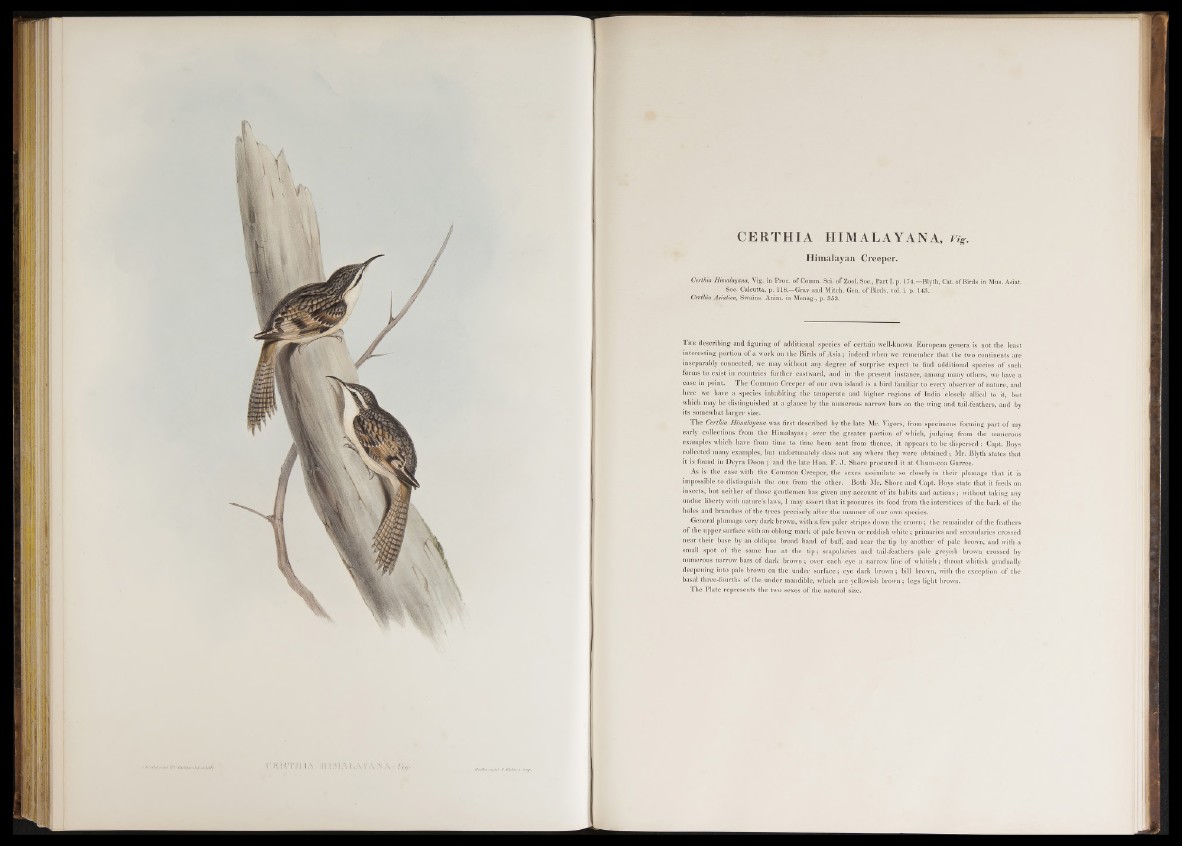
CERTHIA HIMALAYANA, n s .
Himalayan Creeper.
Certhia Himalayana, Vig. in Proc. of Comm. Sci. of Zool. Soc., Part I. p. 174.—Blyth, Cat. of Birds in Mus. Asiat.
Soc. Calcutta, p. 118.—Gray and Mitch. Gen. of Birds, vol. i. p. 143.
Certhia Asiatica, Swains. Anim. in Menag., p. 353.
T h e describing and figuring of additional species of certain well-known European genera is not the least
interesting portion o f a work on the Birds of Asia; indeed when we remember that the two continents are
inseparably connected, we may without any degree of surprise expect to find additional species o f such
forms to exist in countries further eastward, and in the present instance, among many others, we have a
case in point. The Common Creeper of our own island is a bird familiar to every observer of nature, and
here we have a species, inhabiting the temperate and higher regions of India closely allied to it, but
which may be distinguished a t a glance by the numerous narrow bars on the wing and tail-feathers, and by
its somewhat larger size.
The Certhia Himalayana was first described by the late Mr. Vigors, from specimens forming part of my
early collections from the Himalayas; over the greater portion o f which, judging from the numerous
examples which have from time to time been sent from thence, it appears to be dispersed-: Capt. Boys
collected many examples, but unfortunately does not say where they were obtained ; Mr. Blyth states that
it is found in Deyra Doon ; and the late Hon. F. J . Shore procured it a t Chum-coa Gurree.
As is the case with the Common Creeper, the sexes assimilate so closely in their plumage that it is
impossible to distinguish the one from the other. Both Mr. Shore and Capt. Boys state that it feeds on
insects, but neither of those gentlemen has given any account o f its habits and actions ; without taking any
undue liberty with nature’s laws, I may assert that it procures its food from the interstices of the bark of the
holes and branches o f the trees precisely after the manner of our own species.
General plumage very dark brown, with a few paler stripes down the crown ; the remainder of the feathers
of the upper surface with an oblong mark of pale brown or reddish white; primaries and secondaries crossed
near their base by an oblique broad band of buff, and near the tip by another of pale brown, and with a
small spot o f the same hue at the tip ; scapularies and tail-feathers pale greyish brown crossed by
numerous narrow bars of dark brown ; over each eye a narrow line of whitish; throat whitish gradually
deepening into pale brown on the under surface; eye dark brown; bill brown, with the exception of the
basal three-fourths of the under mandible, which are yellowish brown; legs light brown.
The Plate represents the two sexes of the natural size.